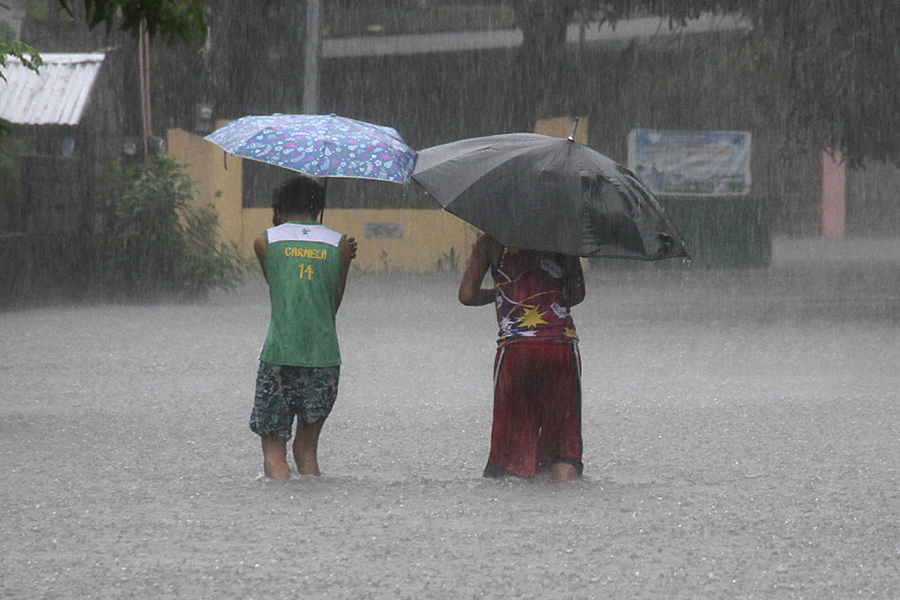Typhoon leaves 15 dead, 12 miners missing in Philippines
Loading...
| MANILA, Philippines
Typhoon Goni blew out of the northern Philippines on Sunday after leaving at least 15 people dead and several others missing, including a dozen miners whose work camps were buried by a huge mudslide in a mountain village, officials said.
Goni was last tracked at sea about 430 kilometers (267 miles) northeast of Basco town in Batanes province on the archipelago's northernmost tip. It has sustained winds of 140 kilometers (87 miles) per hour and gusts of up to 170 kph (105 mph) and was forecast to lash southern Japan within 24 hours, government forecasters said.
While approaching the country's mountainous north, Goni dumped heavy rain for three days then battered already-sodden upland villages with fierce winds, triggering landslides, officials said.
In the hard-hit mountain province of Benguet, landslides killed at least 12 people, including four gold miners who were pulled out of a huge mudslide that buried three work camps in far-flung Taneg village in Mankayan town. A dozen miners remain missing and more than 100 policemen and fellow miners dug through the muddy heap Sunday amid fading hope that survivors would be found, officials said.
Benguet Governor Nestor Fongwan said days of pounding rain and a swollen creek saturated a mountain slope, which cascaded down the gold-mining area at dawn Saturday.
"They were sleeping when a huge chunk of the mountain came down and buried their work sites," Fongwan said by phone. "We're still hoping that we'll find survivors. We're still calling it a search and rescue operation."
Three people died elsewhere in the north after being hit by a landslide, a fallen tree and drowning in a river, while three others were missing after being separately swept away by river currents, according to the Office of Civil Defense.
More than 32,000 people abandoned their homes for safer areas at the height of the typhoon, which damaged nearly 1,000 houses, said Alexander Pama, who heads the government's disaster-response agency.
Several flights and ferry trips were canceled and classes were called off in several towns in metropolitan Manila and nearby provinces as the typhoon battered the north and intensified monsoon rains on the main northern island of Luzon.
Goni is the ninth of about 20 storms and typhoons that are expected to batter the Philippines this year. Typhoon Haiyan, one of the most ferocious storms on record to hit land, devastated large areas of the central Philippines in November 2013, leaving more than 7,300 people dead or missing.







